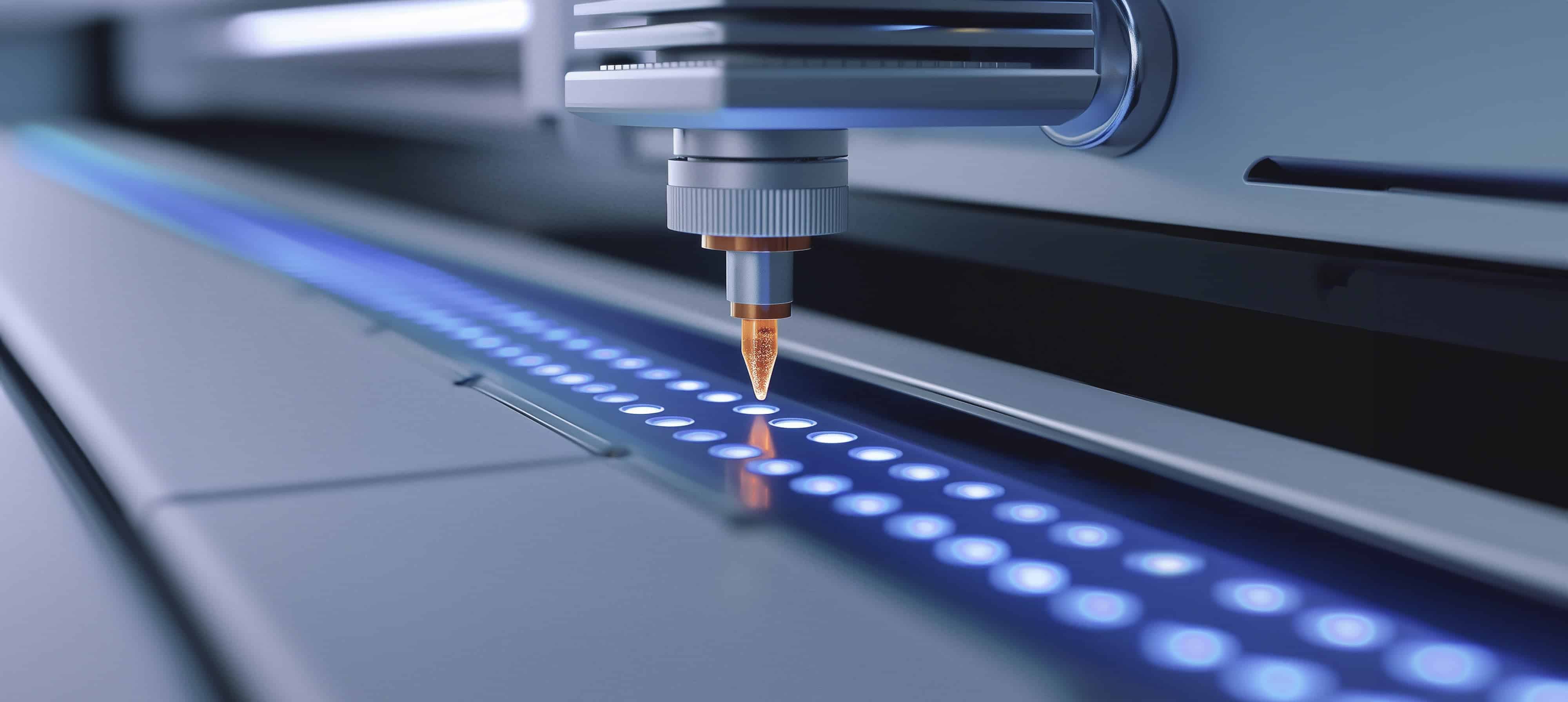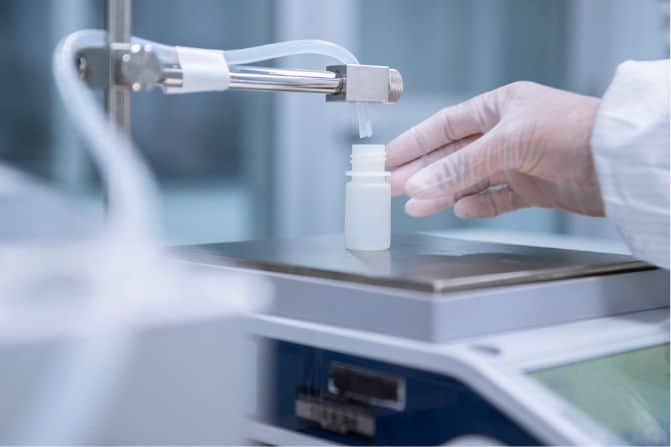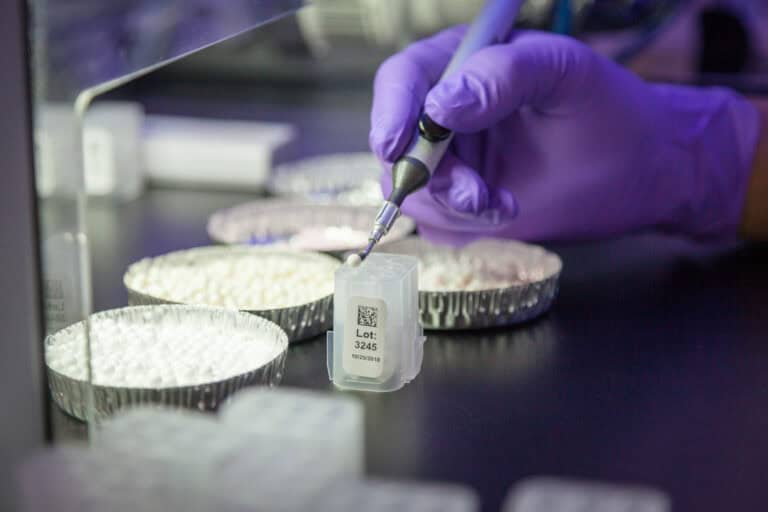In Part 1 of this two-part series we highlighted the characterization and functions of LyoDots® and now in Part 2 we uncover specific LyoDots benefits that can be incorporated in the diagnostic device development process.
LyoDots in Diagnostic Devices
As a reminder, LyoDots are a unique miniaturized format of lyophilized reagent that can revolutionize diagnostic device development. They are small, uniformly shaped dots created through the lyophilization process, which involves freezing the liquid form of a reagent and then removing the water content through sublimation (1). The resulting LyoDots are a stable, dry product that retains the activity and functionality of the original reagent. LyoDots are manufactured by dispensing liquid reagents onto a pretreated surface which is then subsequently freeze-dried. The adherent surface on LyoDots ensures the lyophilized reagents maintain positional correctness and physical stability. The process allows each LyoDot to contain formulated reagent between 0.1 -10 µl and the size of LyoDots is under 4 mm in diameter with a height/ thickness less than 500 µm (0.5 mm). More information about the LyoDots and function in qPCR can be found in “LyoDots: A Unique Lyophilization Format for Next Generation Point of Care Testing.”
Integrating LyoDots in diagnostic design and development processes offers numerous advantages over other lyophilization formats including miniaturization, cost efficiency, precision, reliability, and adaptability.
Diagnostic Devices with LyoDots can be Miniaturized
LyoDots allow assay developers and manufacturers to reduce cartridge or instrument footprint and simplify microfluidics, allowing greater miniaturization (2 and 3). LyoDots are comprised from reagent volumes of 0.1µl to 10µl so they are appropriate for single reactions, compared to larger lyophilized bead formats that comprise reagent sufficient for multiple reactions.
As LyoDots have a flat, circular dome shaped form with a shorter height dimension (less than 0.5mm) compared to a standardized spherical bead shape having a diameter of approximately 2.5 mm for a 10 µl bead and 4.5 mm for a 50 µl bead, LyoDots fit into smaller spaces, enabling device miniaturization. This is especially useful as many in-vitro diagnostic applications utilize cartridges with microfluidic dimensions which cannot accommodate lyophilized beads with a diameter greater than 1 mm.
LyoDots can be placed within microfluidic channels
Additionally, lyophilized cakes or beads require larger rehydration volumes than LyoDots. By using LyoDots, rehydration reservoirs are smaller and can be replaced by channels. A device with a reduced footprint may be developed by optimizing the internal layout using the smaller LyoDot format.
LyoDots in Diagnostic Devices Reduces Costs
Less reagent is used in each LyoDot, compared to traditional lyophilized formats such as bead or cake. In cases where the bead provides excess reagent following rehydration, the unused reagent is waste. Less reagent is used during creation of LyoDots so this can reduce material costs.
LyoDots require less rehydration fluid
As LyoDots also can reduce the overall size and complexity of devices, further savings can be achieved (4). This may be as simple as reducing the amount of plastic used but could also include simplifying welding, removing magnetic stirring requirements, or using smaller pump mechanisms.
LyoDots in Diagnostic Devices Improves Reliability
Both LyoDots and lyophilized beads deliver precise amounts of reagent compared to cake formats. Cake formats can be difficult to handle during the device or cartridge manufacturing process as they disperse easily and are challenging to contain or localize. LyoDots, however, can be handled in the manufacturing process using robotic systems for precise placement into channels, wells, and reservoirs. This improves consistency and reliability, reducing manual errors and enhancing the device’s overall performance.
Additionally, LyoDots can be anchored using an adhesive within the cartridge or device. This helps prevent the lyophilized reagent from positional displacement during transport and storage.
LyoDots have positional accuracy
Ensuring complete and consistent rehydration is crucial for maintaining the performance of diagnostic assays. LyoDots are designed to rehydrate efficiently, reducing the risk of incomplete reconstitution. Regular lyophilized beads or cakes may be displaced or break, leading to inconsistent rehydration and subsequent variation in assay results.
LyoDots in diagnostic devices may also be colored, which can simplify quality control assessment during device or cartridge inspection.
LyoDots in Diagnostic Devices Increases Adaptability
Device modular design gives developers greater flexibility and LyoDots may be combined with lyophilized beads or cakes. Due to their small size, a cartridge can use multiple LyoDots. As an example, in a qPCR application, one lyophilized bead may be composed of lyophilized master mix which following rehydration then feeds into multiple channels, each channel containing a LyoDot comprising of specific probe/primer mix.
In the case where degradation of mixed components can occur during storage, or where they must be used immediately, the incompatible components may be individually lyophilized in different LyoDots with the LyoDots then placed in close proximity to each other in the channel or reservoir.
LyoDots are currently formatted in flat, circular and dome morphologies. These may be advantageous to specific cartridge or device structures and shapes.
| Traditional Lyophilized Formats | LyoDots | |
| Design and Size | Larger footprint due to higher reagent volumes | Compact design, miniaturized components |
| Material and Cost | Standard materials | Reduced material usage |
| Lyophilization Format
|
Higher overall costs due to larger reagent volumes and less efficient lyophilization manufacturing | Lower costs due to reduced reagent volumes. Low loss during lyophilization manufacturing |
| Manufacturability | Partial automation of cake or bead with lower placement precision | Full automation, high placement precision |
| Integrity and Rehydration | Potential for displacement, less optimized rehydration | Anchored reagents, optimized rehydration |
| Customization and Flexibility | Spheres or powder | Modular design, custom shapes |
| Validation and Quality Control | Standardized to mastermixes | Precise dose delivery for individual reactions, colored to enhance inspection |
Table 1: Contrasting Advantages of LyoDots in diagnostic devices compared to Lyophilized beads or cakes.
Summary
For diagnostic devices and cartridges, lyophilized reagents hold many benefits over liquid reagents including greater reliability, improved shelf life, stability at room temperature, and reduced emissions. However, diagnostic device developers now have greater flexibility incorporating lyophilization in their designs using LyoDots. LyoDots in diagnostic devices allows a smaller device footprint, faster cycle times, better reliability as assay precision and repeatability is increased due to improved rehydration and lower costs.
Argonaut manufactures LyoDose beads, LyoDots and lyophilized cake formats. To learn more about our lyophilization services, contact us.
LyoDotsTM is a registered trademark by Argonaut Manufacturing Services.



